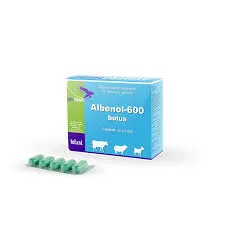- Afrikaans
- Albanian
- Amharic
- Arabic
- Armenian
- Azerbaijani
- Basque
- Belarusian
- Bengali
- Bosnian
- Bulgarian
- Catalan
- Cebuano
- Corsican
- Croatian
- Czech
- Danish
- Dutch
- English
- Esperanto
- Estonian
- Finnish
- French
- Frisian
- Galician
- Georgian
- German
- Greek
- Gujarati
- Haitian Creole
- hausa
- hawaiian
- Hebrew
- Hindi
- Miao
- Hungarian
- Icelandic
- igbo
- Indonesian
- irish
- Italian
- Japanese
- Javanese
- Kannada
- kazakh
- Khmer
- Rwandese
- Korean
- Kurdish
- Kyrgyz
- Lao
- Latin
- Latvian
- Lithuanian
- Luxembourgish
- Macedonian
- Malgashi
- Malay
- Malayalam
- Maltese
- Maori
- Marathi
- Mongolian
- Myanmar
- Nepali
- Norwegian
- Norwegian
- Occitan
- Pashto
- Persian
- Polish
- Portuguese
- Punjabi
- Romanian
- Russian
- Samoan
- Scottish Gaelic
- Serbian
- Sesotho
- Shona
- Sindhi
- Sinhala
- Slovak
- Slovenian
- Somali
- Spanish
- Sundanese
- Swahili
- Swedish
- Tagalog
- Tajik
- Tamil
- Tatar
- Telugu
- Thai
- Turkish
- Turkmen
- Ukrainian
- Urdu
- Uighur
- Uzbek
- Vietnamese
- Welsh
- Bantu
- Yiddish
- Yoruba
- Zulu
พ.ย. . 23, 2024 12:05 Back to list
tilmicosin phosphate premix for cattle
Tilmicosin Phosphate Premix for Cattle
In the ever-evolving realm of veterinary medicine, the use of antibiotics has become a cornerstone in ensuring the health and well-being of livestock. Among the various antibiotics available, Tilmicosin—a macrolide antibiotic—has gained prominence for its effectiveness in treating respiratory diseases in cattle. Tilmicosin phosphate premix stands out as a convenient formulation, allowing for easier administration and dosage management.
Background and Mechanism of Action
Tilmicosin is derived from the fermentation of the bacterium *Saccharopolyspora erythraea*. This antibiotic works primarily by inhibiting bacterial protein synthesis, targeting the ribosomal 50S subunit. Its bacteriostatic action makes it effective against a range of Gram-positive and some Gram-negative bacteria. This is particularly relevant in cattle farming, where respiratory infections, often caused by pathogens such as *Mannheimia hemolytica,* *Histophilus somni,* and *Pasteurella multocida,* can lead to significant economic losses and reduced animal welfare.
Formulation and Administration
Tilmicosin phosphate is typically available in the form of a premix, which can be easily combined with feed. This method of delivery is advantageous as it ensures that the medication is consumed uniformly by the herd, minimizing the risk of dosage errors that may occur with individual injections or oral treatments. The standard dosage for cattle usually ranges from 10 to 30 mg per kg of body weight, and this can be adjusted based on the severity of the infection and Veterinary recommendations.
The premix formulation not only enhances the convenience of administration but also promotes better compliance among livestock producers, allowing for broader antibiotic coverage during periods of high disease risk
.Therapeutic Applications and Benefits
tilmicosin phosphate premix for cattle

The primary therapeutic application of Tilmicosin phosphate is in treating bovine respiratory disease (BRD), which is a complex of conditions that affect the lungs of cattle. This disease can be triggered by various factors including environmental stressors, viral infections, and pre-existing bacterial infections. Using Tilmicosin phosphate can significantly reduce morbidity and mortality rates associated with BRD.
The benefits of using Tilmicosin phosphate also extend to economic factors. By effectively controlling outbreaks of respiratory diseases, cattle operations can see a reduction in veterinary costs, medication expenses, and losses due to reduced weight gain or even death. This makes Tilmicosin phosphate an attractive option for commercial herds where profitability is closely tied to animal health.
Considerations and Precautions
While Tilmicosin is a powerful antibiotic, it is not without its challenges. Producers must be aware of the potential for resistance development, especially with the increasing scrutiny of antibiotic use in food animals. Responsible use, including adhering to prescribed dosages and avoiding unnecessary applications, is critical in preserving the efficacy of Tilmicosin and other antibiotics.
Moreover, Tilmicosin has been associated with certain adverse effects, particularly if not administered properly. It is known to be toxic to goats, and its use should be strictly monitored to avoid cross-contamination in mixed-species operations. As with any pharmaceutical product, consultation with a qualified veterinarian is imperative before initiating treatment with Tilmicosin phosphate.
Conclusion
In conclusion, Tilmicosin phosphate premix offers an effective solution for managing and preventing respiratory diseases in cattle. Its ease of administration, coupled with its therapeutic efficacy, positions it as a valuable tool in the modern veterinary landscape. Nonetheless, its use should be approached with caution, ensuring practices that not only prioritize animal health but also consider the long-term implications for antibiotic resistance. As we continue to navigate challenges within livestock health management, Tilmicosin phosphate remains a vital component in promoting the welfare and productivity of cattle herds. Ultimately, responsible utilization will safeguard its benefits for future generations of livestock.
-
Guide to Oxytetracycline Injection
NewsMar.27,2025
-
Guide to Colistin Sulphate
NewsMar.27,2025
-
Gentamicin Sulfate: Uses, Price, And Key Information
NewsMar.27,2025
-
Enrofloxacin Injection: Uses, Price, And Supplier Information
NewsMar.27,2025
-
Dexamethasone Sodium Phosphate Injection: Uses, Price, And Key Information
NewsMar.27,2025
-
Albendazole Tablet: Uses, Dosage, Cost, And Key Information
NewsMar.27,2025













